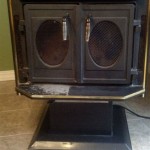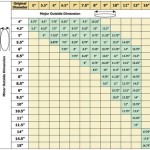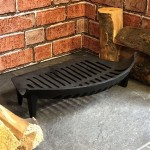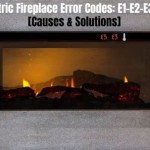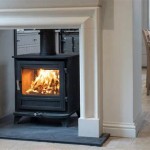Can I Burn Wood in My Fireplace?
The allure of a crackling fire in a fireplace is undeniable. It evokes warmth, comfort, and a sense of nostalgia. But before you start gathering logs and stoking the flames, there are important considerations regarding whether or not it is permissible to burn wood in your fireplace. The answer is not always straightforward and depends on a variety of factors, including your location, the type of fireplace you have, and local regulations.
Local Regulations and Restrictions
The most significant factor determining if you can burn wood in your fireplace is local regulations. Many areas have implemented air quality restrictions, particularly in urban and suburban environments, due to the harmful emissions produced by burning wood. These regulations can vary significantly depending on the specific location, ranging from outright bans on wood-burning fireplaces to restrictions on the types of wood that can be burned and the times of day when burning is permitted. It is crucial to consult with your local government or environmental agency to determine the specific regulations in your area.
For example, some areas may prohibit the burning of certain types of wood, such as softwood or treated lumber, which release higher levels of pollutants. Others may require the use of certified wood-burning appliances that meet specific emission standards. In some cases, you may need to obtain a permit or license to operate a wood-burning fireplace.
Fireplace Type and Design
The type of fireplace you have also plays a role in determining its suitability for burning wood. Older fireplaces often have open hearths that are less efficient and produce more smoke and pollutants. Modern fireplaces, such as those equipped with inserts or stoves, are more efficient and generate less smoke, making them a more environmentally friendly option. However, even with modern fireplaces, it is essential to adhere to proper burning practices to minimize emissions.
For example, using seasoned hardwood that has been dried for at least six months will produce less creosote buildup and smoke. Additionally, ensuring adequate ventilation and following recommended operating procedures will contribute to a cleaner burn and minimize the impact on air quality. It is always advisable to consult with a professional fireplace installer or chimney sweep for guidance on the best practices for burning wood in your specific fireplace.
Environmental Considerations
Burning wood in your fireplace contributes to air pollution and greenhouse gas emissions. While the cozy ambiance of a fireplace is appealing, it's important to acknowledge the environmental impact. Wood smoke contains particulate matter, carbon monoxide, and other harmful pollutants that can affect air quality and human health. Particulate matter can penetrate deep into the lungs, leading to respiratory problems, especially for individuals with pre-existing conditions. The release of greenhouse gases, such as carbon dioxide, contributes to climate change.
If you choose to burn wood, it is important to do so responsibly by using only seasoned hardwood, maintaining your fireplace regularly, and following best practices for efficient burning. Consider exploring alternative heating options, such as gas fireplaces or heat pumps, to reduce your environmental impact.
Alternative Heating Options
For those seeking a more environmentally friendly and efficient heating source, numerous alternatives to burning wood in a fireplace exist. Gas fireplaces offer a similar aesthetic appeal without the smoke and emissions associated with wood burning. Electric fireplaces provide a realistic flame effect and can be controlled remotely, making them convenient and energy-efficient. Heat pumps provide a highly efficient way to heat and cool your home, utilizing a refrigerant to move heat from one area to another. While these options may have higher upfront costs, they offer long-term savings and a reduced environmental impact compared to traditional wood-burning fireplaces.
Ultimately, the decision of whether or not to burn wood in your fireplace is a personal one, influenced by a combination of factors, including local regulations, fireplace type, and environmental concerns. By carefully considering these factors and adopting best practices for burning wood, you can enjoy the warmth and ambiance of a fireplace while minimizing your environmental impact. Remember, consult with your local authorities and fireplace professionals to make informed choices that align with your individual needs and priorities.
Can I Burn Real Wood In My Fire Place Diy Home Improvement Forum

Why You Can T Burn Wood In A Gas Fireplace But Starter

Why A Wood Burning Fireplace Could Be Hazardous To Your Health University Hospitals

Why Shouldn T I Burn Anything Beside Wood In My Woodstove

How To Properly Burn Wood In A Fireplace Stove Experts

Fireplace Tips For Burning Wood All Winter Long Mr Handyman

What Not To Burn Houston Tx Lords Chimney

How To Use A Fireplace Bob Vila

What Wood To Burn In My Fireplace We Love Fire

4 Tips On Making Your Fireplace Burn More Efficiently


